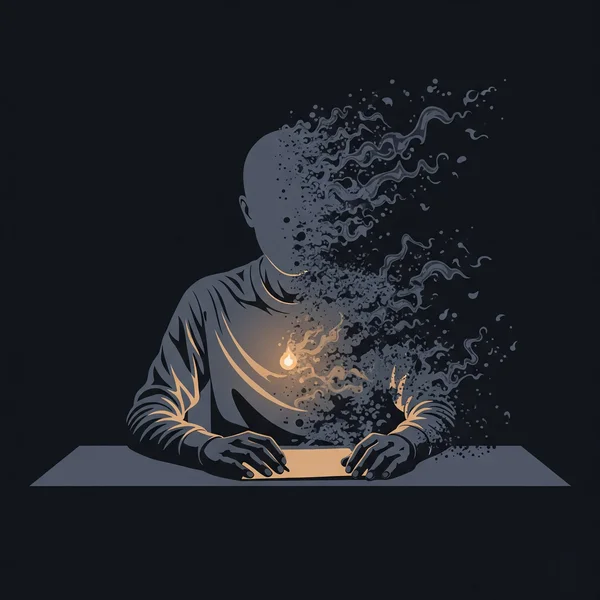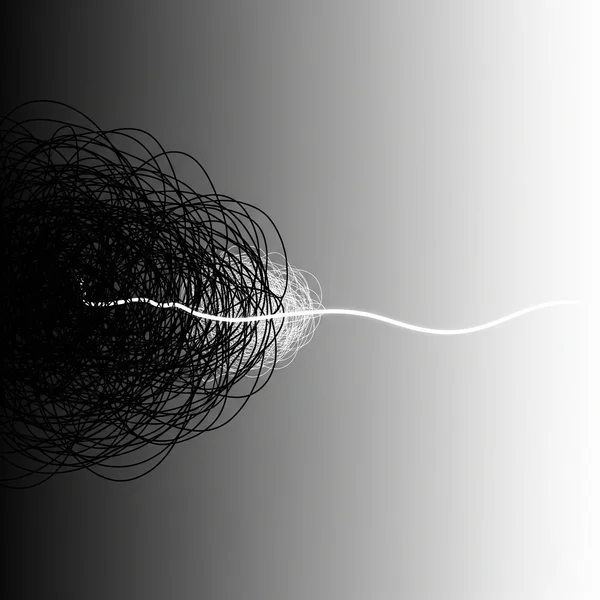The Ultimate Burnout Symptoms Checklist
Do you feel tired all the time, even after a long weekend? Does your job, which you once found engaging, now feel like a daily burden? If you're nodding along, you might be wondering, What are the symptoms of being burned out? It's a critical question many professionals face. You're not just dealing with stress; you might be experiencing professional burnout, a phenomenon recognized by the World Health Organization (WHO) as resulting from unmanaged chronic workplace stress.
This guide provides a comprehensive checklist to help you identify the key signs of burnout. While this list is a powerful tool for self-reflection, the most effective way to understand your situation is through a structured burnout symptoms test. Let's dive into the four core dimensions of burnout.

Dimension 1: Overwhelming Exhaustion (Physical & Mental)
This is the cornerstone symptom of job burnout and the one people notice first. It's a profound sense of depletion that isn't relieved by rest. This goes far beyond feeling tired after a busy week.
Constant Fatigue That Sleep Doesn't Cure
You wake up feeling just as tired as when you went to bed. This persistent emotional exhaustion leaves you with no energy reserves, making it difficult to face the day's tasks. It’s a feeling of being completely used up.
Physical Signs: Headaches and Stomach Issues
Chronic stress often manifests physically. You might experience frequent headaches, muscle pain, or stomach and bowel problems. Your immune system may also weaken, leading to more frequent illnesses.
Feeling Drained and Lacking Energy for Work
This isn't just physical tiredness; it's a deep-seated mental feeling drained of all resources. The thought of going to work and dealing with your responsibilities feels overwhelming and requires immense effort.
Dimension 2: Growing Mental Distance & Cynicism
As exhaustion sets in, a protective mechanism often kicks in: emotional and cognitive detachment from your work. This mental distance is a way of coping with the overwhelming demands.
Losing Passion and Motivation for Your Job
Activities and projects that once excited you now feel tedious and unfulfilling. This lack of motivation is a clear sign that your internal drive is sputtering. You may find yourself just going through the motions.
Feeling Detached from Your Work and Colleagues
You start to feel like an outsider in your own job. You may actively avoid social interactions with colleagues, withdraw from team activities, and feel disconnected from your organization's mission.
Developing a Negative or Cynical Outlook
Cynicism and negativity become your default response. You might become overly critical of your job, your colleagues, and the work itself. This often replaces the positive engagement you once had.

Dimension 3: Noticeable Cognitive Impairment
Often referred to as "brain fog," this dimension directly impacts your performance and can be particularly distressing. Answering the question "Is it burnout or ADHD?" often starts by examining these symptoms in the context of your work stress.
"Brain Fog": Difficulty Concentrating and Focusing
You find it hard to pay attention during meetings, struggle to focus on a single task, and are easily distracted. This cognitive impairment makes complex work feel impossible.
Problems with Memory and Making Decisions
Forgetfulness becomes common. You might forget deadlines, misplace things, or struggle to recall important information. Making decisions, even simple ones, can feel paralyzing.
Reduced Creativity and Problem-Solving Abilities
The mental energy required for creative thinking and effective problem-solving is gone. You may find yourself sticking to rigid, pre-approved methods because you lack the capacity for innovative thought.
Dimension 4: Emotional Dysregulation and Numbness
This dimension describes the emotional toll of burnout. Your ability to manage your emotions is compromised, leading to a state of either heightened reactivity or emotional numbness.
Feeling Overwhelmed and Emotionally Drained
You feel like you have nothing left to give emotionally. The smallest setback can feel catastrophic, and you may feel constantly on the verge of tears or an outburst.
Increased Irritability or Feeling Emotionally Blunted
You might snap at colleagues or loved ones over minor issues. Alternatively, you may feel nothing at all—a sense of being "numb" or blunted, unable to experience joy or sadness. This is a clear indicator of emotional exhaustion.
A Diminished Sense of Personal Accomplishment
You feel like you’re no longer effective at your job. This sense of inefficacy, or reduced accomplishment, can be crushing, making you doubt your skills and abilities, creating a vicious cycle of negativity.
How to Get a Real Burnout Symptoms Test?
Reading through this checklist is an important first step. If many of these points resonate with you, it's a strong signal to take action. So, Do I have burnout? A checklist can raise awareness, but it can't provide a structured assessment of your risk level across all four dimensions.
Why Self-Checking Isn't a Diagnosis
This guide helps you spot the symptoms of being burned out, but it's not a diagnostic tool. Burnout is complex, and its severity varies greatly from person to person.
The Value of a Science-Based Assessment
A well-designed assessment measures your experiences against established scientific frameworks. It provides a detailed, personalized report that helps you understand where you stand and what to do next. This is crucial for effectively coping with burnout.
Take Our Free, Confidential Burnout Test Now for a Full Report
To move from wondering to knowing, consider taking our science-based assessment. It's free, confidential, takes about 10-15 minutes, and provides an instant report on your burnout risk profile.

Recognizing the Signs Is Your First Step
Understanding the four core dimensions of burnout—Exhaustion, Mental Distance, Cognitive Impairment, and Emotional Dysregulation—is the first and most crucial step toward recovery. You are not alone in this experience, and recognizing these signs of burnout is a sign of strength, not weakness. It opens the door to making meaningful changes.
Answering Your Questions About Burnout Symptoms
What is the main difference between stress and burnout?
Stress is typically characterized by over-engagement—a sense of urgency and hyperactivity. You feel you can overcome your challenges if you just push harder. Burnout, in contrast, is characterized by disengagement. It's a feeling of emptiness, a lack of motivation, and a sense that you have nothing more to give.
Can you recover from burnout without quitting your job?
Yes, absolutely. Recovery often involves a combination of strategies, including setting firm boundaries, changing your relationship with work, seeking support, and prioritizing self-care. For many, understanding their specific burnout profile through a professional burnout test is the first step in creating an effective recovery plan within their current role.
How quickly can burnout develop?
Burnout is a gradual process; it doesn't happen overnight. It develops over a prolonged period of chronic stress and emotional drain. The "slippery slope" nature of burnout is why it's so important to recognize the early warning signs before you reach a state of complete exhaustion.